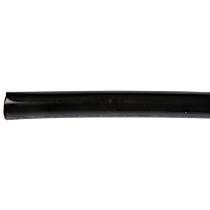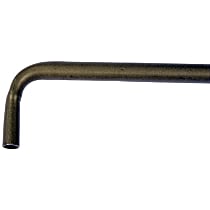{
"lazyNodes": false,
"abFitnotesFlag": false,
"abCrawlReviews": false,
"productOptionsCookie": false,
"orderDelayFlag": false,
"skipSessionCookie": false,
"covidMessage": false,
"fullTitleCookie": false,
"nrLoggerCookie": false,
"checkoutReviewCookie": false,
"productOptionSeqCookie": false,
"maintenanceFlag": false,
"bufferETACookie": false,
"multiShippingDiscountFlag": false,
"newFitmentFlag": false,
"surveyOptInFlag": false,
"crossSellFlag": false,
"skuMappingFlag": false,
"paySplitCookie": false,
"callDisableFlag": false,
"zipPaymentFlag": "u",
"hassleFreeReturn": false,
"lifetimeReplacement": false,
"cpn_off": false
}Volkswagen Jetta Fuel Lines
Shop Catalog
![]() WARNING: This product can expose you to chemical which is known to the State of California to cause cancer and birth defects or other reproductive harm. For more information go to www.P65Warnings.ca.gov.
WARNING: This product can expose you to chemical which is known to the State of California to cause cancer and birth defects or other reproductive harm. For more information go to www.P65Warnings.ca.gov.
![]() WARNING: This product can expose you to chemical which is known to the State of California to cause cancer and birth defects or other reproductive harm. For more information go to www.P65Warnings.ca.gov.
WARNING: This product can expose you to chemical which is known to the State of California to cause cancer and birth defects or other reproductive harm. For more information go to www.P65Warnings.ca.gov.
![]() WARNING: This product can expose you to chemical which is known to the State of California to cause cancer and birth defects or other reproductive harm. For more information go to www.P65Warnings.ca.gov.
WARNING: This product can expose you to chemical which is known to the State of California to cause cancer and birth defects or other reproductive harm. For more information go to www.P65Warnings.ca.gov.
![]() WARNING: This product can expose you to chemical which is known to the State of California to cause cancer and birth defects or other reproductive harm. For more information go to www.P65Warnings.ca.gov.
WARNING: This product can expose you to chemical which is known to the State of California to cause cancer and birth defects or other reproductive harm. For more information go to www.P65Warnings.ca.gov.
![]() WARNING: This product can expose you to chemical which is known to the State of California to cause cancer and birth defects or other reproductive harm. For more information go to www.P65Warnings.ca.gov.
WARNING: This product can expose you to chemical which is known to the State of California to cause cancer and birth defects or other reproductive harm. For more information go to www.P65Warnings.ca.gov.
![]() WARNING: This product can expose you to chemical which is known to the State of California to cause cancer and birth defects or other reproductive harm. For more information go to www.P65Warnings.ca.gov.
WARNING: This product can expose you to chemical which is known to the State of California to cause cancer and birth defects or other reproductive harm. For more information go to www.P65Warnings.ca.gov.
![]() WARNING: This product can expose you to chemicals including Phthalates, which is known to the State of California to cause cancer and birth defects or other reproductive harm. For more information go to www.P65Warnings.ca.gov.
WARNING: This product can expose you to chemicals including Phthalates, which is known to the State of California to cause cancer and birth defects or other reproductive harm. For more information go to www.P65Warnings.ca.gov.
![]() WARNING: This product can expose you to chemicals including Phthalates, which is known to the State of California to cause cancer and birth defects or other reproductive harm. For more information go to www.P65Warnings.ca.gov.
WARNING: This product can expose you to chemicals including Phthalates, which is known to the State of California to cause cancer and birth defects or other reproductive harm. For more information go to www.P65Warnings.ca.gov.
![]() WARNING: This product can expose you to chemical which is known to the State of California to cause cancer and birth defects or other reproductive harm. For more information go to www.P65Warnings.ca.gov.
WARNING: This product can expose you to chemical which is known to the State of California to cause cancer and birth defects or other reproductive harm. For more information go to www.P65Warnings.ca.gov.
![]() WARNING: This product can expose you to chemicals including Phthalates, which is known to the State of California to cause cancer and birth defects or other reproductive harm. For more information go to www.P65Warnings.ca.gov.
WARNING: This product can expose you to chemicals including Phthalates, which is known to the State of California to cause cancer and birth defects or other reproductive harm. For more information go to www.P65Warnings.ca.gov.
![]() WARNING: This product can expose you to chemical which is known to the State of California to cause cancer and birth defects or other reproductive harm. For more information go to www.P65Warnings.ca.gov.
WARNING: This product can expose you to chemical which is known to the State of California to cause cancer and birth defects or other reproductive harm. For more information go to www.P65Warnings.ca.gov.
![]() WARNING: This product can expose you to chemicals including Phthalates, which is known to the State of California to cause cancer and birth defects or other reproductive harm. For more information go to www.P65Warnings.ca.gov.
WARNING: This product can expose you to chemicals including Phthalates, which is known to the State of California to cause cancer and birth defects or other reproductive harm. For more information go to www.P65Warnings.ca.gov.
![]() WARNING: This product can expose you to chemicals including Phthalates, which is known to the State of California to cause cancer and birth defects or other reproductive harm. For more information go to www.P65Warnings.ca.gov.
WARNING: This product can expose you to chemicals including Phthalates, which is known to the State of California to cause cancer and birth defects or other reproductive harm. For more information go to www.P65Warnings.ca.gov.
![]() WARNING: This product can expose you to chemicals including Phthalates, which is known to the State of California to cause cancer and birth defects or other reproductive harm. For more information go to www.P65Warnings.ca.gov.
WARNING: This product can expose you to chemicals including Phthalates, which is known to the State of California to cause cancer and birth defects or other reproductive harm. For more information go to www.P65Warnings.ca.gov.
![]() WARNING: This product can expose you to chemicals including Phthalates, which is known to the State of California to cause cancer and birth defects or other reproductive harm. For more information go to www.P65Warnings.ca.gov.
WARNING: This product can expose you to chemicals including Phthalates, which is known to the State of California to cause cancer and birth defects or other reproductive harm. For more information go to www.P65Warnings.ca.gov.
Top Rated Products
Popular Products
Product Questions & Answers
Customer Guides
Preventing Disasters on Your Volkswagen Jetta Fuel Line
Without the fuel line in your Volkswagen Jetta, fuel cannot be regulated and your engine will not be able to function properly. If you wish to learn how to diagnose possible fuel line problems, then here is a quick and easy guide for you:
Fuel leaks
A visible and rather mild symptom of a fuel line problem is when you see fuel dripping under your vehicle. This could really affect your car's mileage, as a lot of fuel gets wasted the more you ignore this problem. One of the causes for this problem to occur is the metal frame. There are times that the fuel line is placed in such a way that it could rub itself off on the metal frame. This will slowly wear the part down, until the fuel finally drips down. Another cause for the leakage issue is the cross treading of fuel line fittings. Sometimes they can be installed incorrectly, and therefore is not able to properly fit. This kind of fuel line problem is usually resolved by replacing the whole part, but cutting the damaged parts and replacing those is possible, albeit very tricky.
Engine problems
A more serious sign of a faulty fuel line is when you are having difficulties with your engine. These come in the form of either starting failures or sudden engine shutdowns. The culprit for this is the existence of a clog forming up inside your fuel line. When this car part is blocked, the engine will not be able to having enough fuel to do its tasks, such as starting and getting the car to continuously work. A problem like this could easily be fixed by manually removing the clog.
Vehicle suddenly smokes
Stop the car immediately when you see this happening. This is a crystal clear indication that your fuel line, in fact your whole vehicle, is in the danger zone. The fuel line is very likely completely blocked and as a result, fuel will return to the tank. When it does so, it may leak and could get ignited by the engine. If you still continue to drive after this, your car could suddenly go on fire. Thus, it is imperative to repair the clogged fuel line immediately.
The Volkswagen Jetta fuel line ensures that your engine get the right amount of fuel for it to work at maximum efficiency. Thus, proper upkeep must be made to make sure that it continues doing so. Here are a couple of ways to maintain it:
Remove clogs inside the fuel line.
A blocked fuel line could cause many problems for your car, from the simplest starting problem to a disastrous car fire. Thus, it is important that you know how to unclog your fuel line, as well as do it on a regular basis. Clogs come in the form of either a frozen line, or dirty fuel plugging the filter. On the former, this tends to happen in cold areas such as Alaska or Minnesota, where temperatures are very low. The easiest way to solve this particular problem is by using antifreeze. This material will absorb any accumulated water collected, removing the ice formations inside. You could also use your vacuum cleaner and blow exhaust air into the fuel line if you do not want to buy antifreeze. As for the latter, you could drain the fuel tank and clean the line. However, if the dirt deposit is too much or ordinary cleaning to handle, then it is advised to replace the part.
Take time to bleed out the fuel line.
Transferring fuel from the fuel tank to the fuel injection is a very daunting and heavy task for the fuel line. As they are always under high pressure, it is important that you are able to relieve that pressure from time to time, else the part might not be able to take it and cause leaks or other problems. To do this, you first need to find the Schraeder valve, which is a component that purges air, thus lowering pressure. Loosen the valve with a tool such as a wrench or screwdriver, and let the air come out. Tighten it again and turn the key to the "on" position, making sure that the pumping of fuel could be heard. Repeat this process until you can feel that the whole fuel system is within normal pressure standards.



























